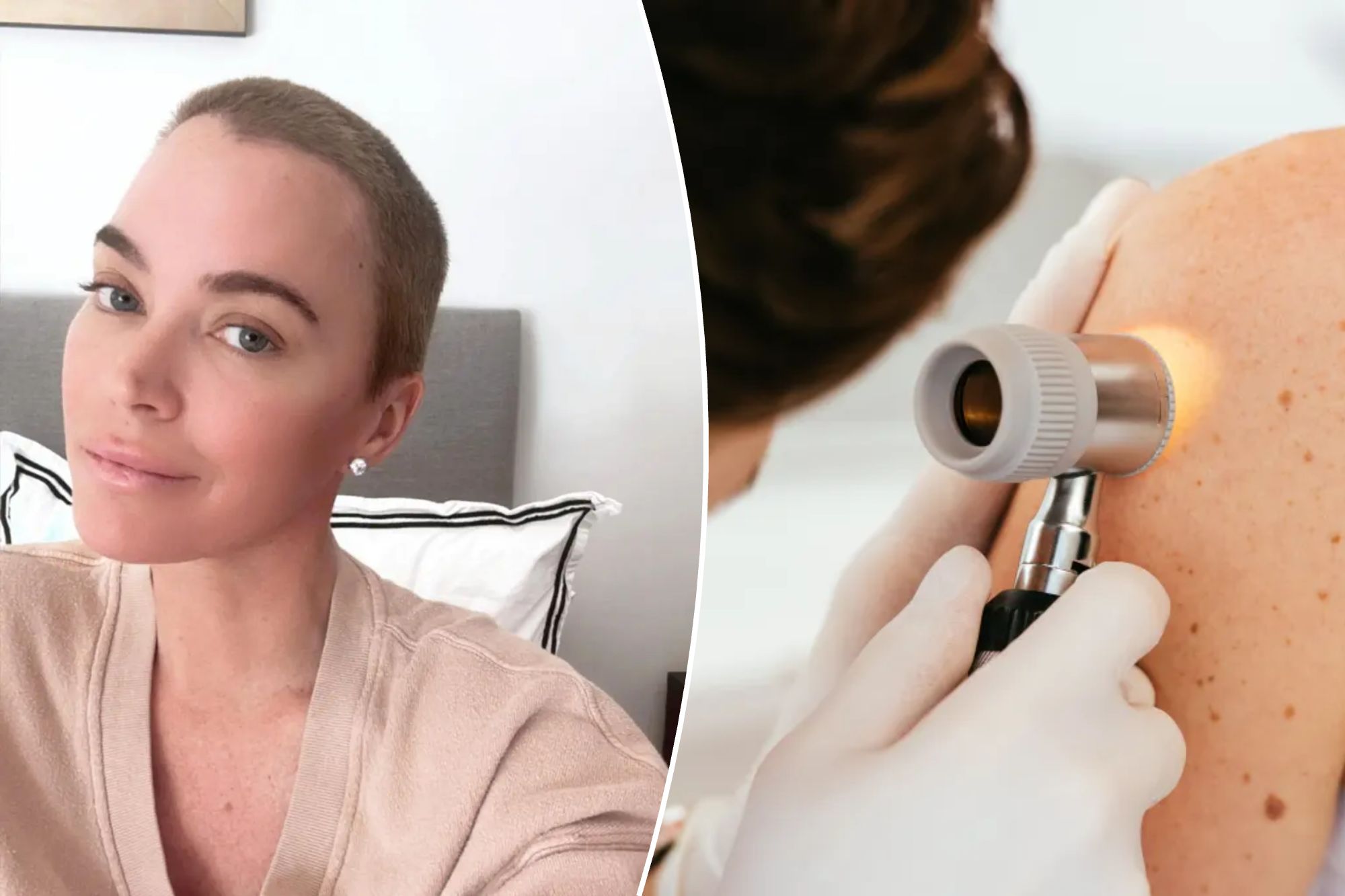
Teddi Melncamp’s life is dependent on equilibrium while fighting with an aggressive form of skin cancer in Phase 4.
The star of “Housewives of Beverly Hills” revealed this week that her father, legend of Rock John Melncamp, is already making burial plans as her melanoma spread to the lungs and brain.
The post fired two experts for penetrating the “black tumor” that sends about 8,000 Americans to the grave every year – and what you can do to avoid becoming one of them.
Makes make melanoma so dangerous?
“Many skin cancers – for example, basal cell carcinoma – grow only on the skin and do not usually spread, ”said Dr. Viktoryia kazlouskaya, CEO of the Dermatology Circle, for The Post.
Melanoma, meanwhile, is a completely different beast.
“Melanoma is considered the most dangerous type of skin cancer because it has a high potential to spread (metastasis) in other parts of the body if not detected and treated early,” said Dr. Adarsh Vijay Mudgil, a dermatologist.
This is because melanoma cells act differently than other skin cancer cells, spreading rapidly into organs and other tissues through the bloodstream and lymphatic system, Mudgil explained.
The risk of spreading melanoma depends on several factors, added kazlouskaya, including the size and stage of the tumor, the age of the patient and any other medical condition they may have, such as a suppressed immune system.
For Melncamp, which was diagnosed with melanoma in 2022, doctors discovered numerous tumors in her brain in February, which they believe had “grown for at least six months”.
“These are all a direct result of my melanoma,” she shared through Instagram on March. Since then, doctors have also found tumors in the lungs.
What does melanoma look like?
“Melanomas can appear as a new mole, a changing mole or a place with an irregular shape, border or color, often with shades of brown, black, or even pink, red or white,” Mudgil said.
“Things to look for are the” abcde “of melanoma – asymmetry, boundary irregularities, color variability, diameter greater than 6 mm (which is the size of a pencil tire), and last, the evolution of an existing mole to display any of the aforementioned qualities,” he recommended.
While it is useful to keep an eye on your skin for any changes, kazlouskaya emphasized that in many cases, you will need a professional to evaluate suspicious points.
“Many ordinary moths can be large or slightly irregular, but they are not dangerous,” she said. “And vice versa – melanomas are not always very atypical and sometimes they don’t even have pigment.”
Who is at risk for melanoma?
“Melanoma can affect people of all skin colors and ethnicities,” Mudgil said.
However, the easier skin significantly increases your chances of developing the disease. In fact, the risk of taking melanoma is 1 in 33 for white people, compared to only 1 in 1,000 for black people, according to the American Cancer Association (ACS).
This is because the lighter skin contains less melanin, the pigment that protects against UV damage. Among those with lighter skin, the risk is especially higher for people with red or blonde hair, blue or green eyes, or skin that is easily wiped.
The risk of melanoma also increases with age. The average age of diagnosed Americans is 66, but is one of the most common cancers in people under 30 – especially young women.
Other risk factors include being male, having some moths, a personal or family history of the disease and a history of sunburn, especially in childhood. People who spend a lot of time outside can face higher risk due to increased sun exposure.
How can I protect myself from melanoma?
Most skin cancers are caused by excessive exposure to ultraviolet rays (UV).
To reduce your risk of melanoma, it is essential to be careful how much UV exposure you are taking.
“Daily sunlight and protective dress when the sun is extreme are simple prevention measures,” Kazlouskaya said.
The sun’s rays are stronger between 10am and 4pm, so try to avoid being outside during these hours or staying in the shade.
But don’t be fooled by cloudy or fresh days – UV rays can still reach you, and they reflect surfaces like water, cement and snow. That is why you should wear a wide spectrum sun cream with a SPF of 30 or higher every day, no matter the weather.
And never, never open me on a bed for inner tanning. They emit harmful UV radiation, and studies show that using one before the age of 35 can increase your risk of melanoma by up to 75%.
Finally, prevention is essential.
“Annual skin checks and self-proofs can help detect a suspicious place early,” Kazlouskaya said.
What are my chances of surviving melanoma?
“Melanoma is one of the” deadly “cancers we know.” Said kazlouskaya. The successful treatment Theller is early discovery.
“The sooner we catch, the better,” she explained. “In the early stages, it can often only be cured with a simple excision and has a wonderful prognosis.”
But after cancer spreads, these chances change dramatically.
In cases where melanoma has not spread beyond the skin, 99 out of 100 patients will survive for five years after diagnostics, according to ACS.
This number drops significantly to only 35 out of 100 patients when cancer is spread to remote parts of the body, such as lungs or liver.
In 2025, ACS estimates that about 104,960 new cases of melanoma will be diagnosed in the US, with approximately 8,430 Americans expected to die from the disease.
“If you see something unusual on your skin, enter it to see a ASAP Board certified dermatologist!” Said Mudgil.
#melanoma #deadly #skin #cancer #Teddi #Melncamp #spread
Image Source : nypost.com